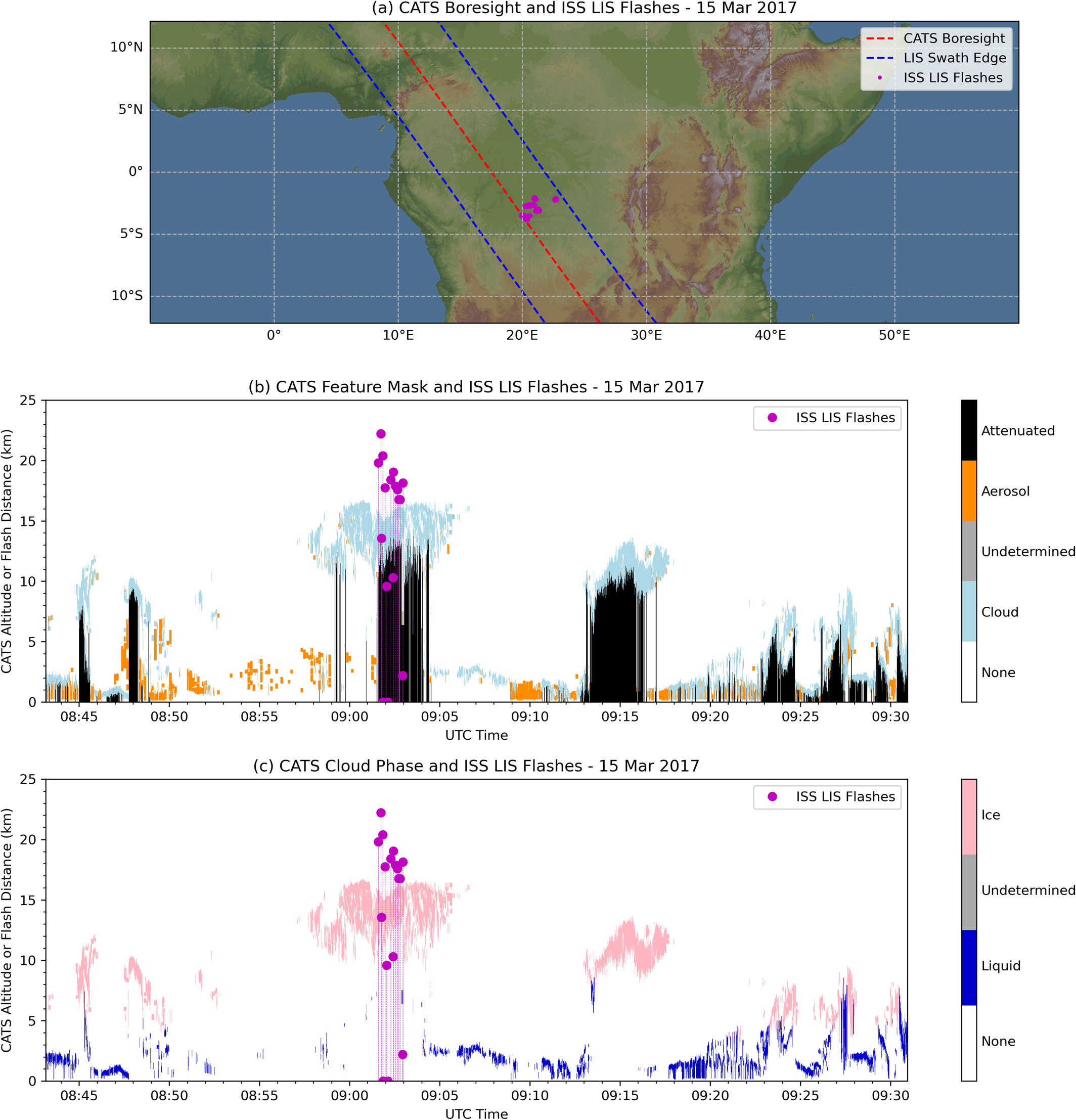Timothy J. Lang and Sarah D. Bang (ST11) are authors on an article called “Exploring the Scientific Utility of Combined Spaceborne Lidar and Lightning Observations of Thunderstorms,” which was recently accepted in the journal Earth and Space Science. This study used Lightning Imaging Sensor (LIS) and Cloud-Aerosol Transport System (CATS) observations in a first-of-its-kind combined analysis of global spaceborne lightning and cloud lidar observations. Both instruments overlapped on the International Space Station (ISS) during March-October 2017, which provided enough data for a pilot study to understand how lidar and lightning data can be analyzed to concert to provide new insights into global thunderstorms.
The results found that thunderstorm cloud-top heights (CTH) slope downward from the Equator toward the poles, similar to how the tropopause height also slopes downward. These observations were consistent with spaceborne radar-based observations, but lidar provides a more accurate estimate of CTH. Additionally, lidar measurements of cloud properties, like CTH and the amount of ice in the cloud, were quantitatively related to lightning observations like flash rate. The lidar also was helpful in finding instances where ISS LIS accidentally detected glint from the sun on water, snow, etc. instead of lightning, because there were no lidar-detected clouds nearby. However, this was also shown to be a rare occurrence (~0.1% frequency) as LIS data processing has strong quality controls for surface glint. Based on this pathfinder study, additional fruitful scientific insights can be expected from other, larger combined lidar/lightning datasets.
Read the paper at: https://agupubs.onlinelibrary.wiley.com/doi/full/10.1029/2022EA002400.
